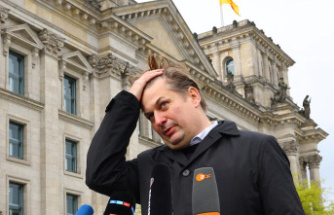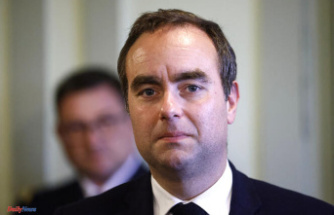The meeting of the European Central Bank (ECB) has surprised the markets and has placed a part of the foci on an indicator that had time in the background: the risk premium. The indicators of the countries of the euro zone returned to rebound on Thursday shortly after Christine Lagarde's intervention in which she did not ruler start the rise in types in Europe this year. The tension was again on the debt and, as happened in 2012, the peripheral countries are the most concerned - because they are the ones who are most played - before a faster stimulus withdrawal than expected.
This explains that risk premiums register a leap that in Spanish case was from 74 points until 80. It is necessary to go back until the end of February 2020 to find similar levels in the Spanish indicator; In fact, it was in April of that same year when he recorded maximum at levels close to 150 points.
Yesterday, the tension was softened and the Spanish risk premium fell to 78 integers, but they remain in the environment the uncertainty and the questions about the impact it could have on the financing and recovery of the Spanish economy a hardening of monetary policy in Europe faster and harder than in principle was expected. "At first I would not be surprised to see an expand process, but we are not much less in the situation of 2010 or 2012, when every day the premium climbed 20 or 40 points. Although these days reach 100 points or Something higher levels, we should not in principle alarming ourselves, "explains Felix López, a managing partner of the ATL Capital manager. "Since 2014, the Spanish risk premium has remained in a range between 55 and 180 points and within those limits, we could talk about a certain normality and assumable levels. Another thing is that it rises more or in a very fast way," he adds .
The risk premium was one of the protagonists of the financial crisis of 2012 in Europe. Countries like Greece exceeded 1,000 points and, in the Spanish case, the maximums exceeded 600 integers. Only the intervention of Mario Draghi and his already mythical "Whselfte it Takes" managed to stop climbing and ward off the ghost of the rescue in more economies from the region of which they finally had to assume him.
Since then, the ECB stimuli hose has served to reduce the financial risks of the members of the Eurozone, especially the most indebted and with higher deficits. At the beginning of 2020, when it seemed that the regulator (already with Christine Lagarde in front) was going to begin withdrawal, the pandemic broke out and the confinements forced the Bank to further increase the injection of money to economies. The maneuver has been fundamental for the sustainability of the countries, but it has also been a significant increase in its leverage and that leaves them in a more committed position before a rate rise or a reduction in bond purchases by the ECB.
"A rate rise scenario (be sooner than late, be more intense or less) and a reduction or withdrawal of asset purchase programs by the central bank will not favor Spain, with one of the highest percentages of public debt on GDP of the European Union and with enormous needs to finance a worrisome deficit. The future is, the less, worrying and complicated, "says Antonio Castelo, an analyst at Ibroker. However, Castello frames the extension of peripheral risk premiums on Thursday in a "overreaction" of the markets. "Although none of the central banks has said concretely, the market has preferred to perform a hard interpretation, understanding that the rates will go up and that, in addition, the rise is just around the corner," he explains.
In any case, the fixed income remains without sinking between the best positioned investment options for this year. "In absolute terms, the sovereign debt is now not attractive and in relative terms, maybe it may be interesting Italy and Spain", distinguish Felix López.
In this line, Hernán Cortés, a member of Olea Management and Coestor of the Neutral Olea Fund, predicts that "the risk premium will increase for countries with minors credit rating when the ECB interrupts purchases, so the Spanish premium can increase even 120 or 150 bp, which would take the profitability of our 10-year bonus up to 2.2% or 2.5% ".
Date Of Update: 05 February 2022, 21:25











